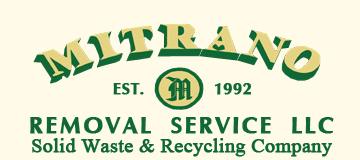 Businesses and organizations of all sizes and virtually every industry and service field can benefit from renting a commercial compactor. Waste removal can be a significant expense for companies that generate a lot of trash – efficiently compacting it can reduce the volume of waste produced and the number of scheduled pick-ups needed to remove it.
Businesses and organizations of all sizes and virtually every industry and service field can benefit from renting a commercial compactor. Waste removal can be a significant expense for companies that generate a lot of trash – efficiently compacting it can reduce the volume of waste produced and the number of scheduled pick-ups needed to remove it.
Commercial trash compactors come in many different styles and sizes to meet a wide range of customer needs. Large 15-40 yard self-contained compactors are generally used by commercial businesses, department stores, and malls that share a dumpster. These compactors are ideal for organizations that produce large volumes of waste and have plenty of space outside for equipment. Businesses with limited space such as retail stores or large service firms often prefer to use outdoor vertical compactors which can fit in most standard dumpster corrals.
Outdoor commercial trash compactors such as self-contained and vertical compactors can be a viable alternative to regular dumpsters because they can hold so much trash. Outdoor vertical compactors can hold anywhere from 18-32 cubic yards of loose trash before being picked up, whereas a 40 yard compactor can hold as much as 120 cubic yards.
If you’re considering renting a commercial compactor for your operation, here are some helpful tips to select the right compactor and size for your organization and requirements:
Evaluate Cost-Effectiveness
Companies use a compactor to reduce waste volume for fewer trips to the disposal sites. Assuming the waste hauler is charging per pull, fewer pulls means less cost. Additionally, there are landfill charges that are based on weight or volume as well as compactor rental fees unless they are customer-owned.
Evaluating these factors will help you determine if a compactor can save you money. If it can’t then don’t get one. If you’re not sure, the compactor experts here at Mitrano Removal Service will be happy to discuss your needs, what compactor might work best for your operation, and determine the appropriate size system for your requirements.
Maximize Compaction Ratio
Compaction ratios provide a good estimate of compactor performance. For instance, consider the amount of trash that typically fills a 30 cubic yard open-top dumpster. Utilizing a 4:1 compactor, the equivalent of 4 of these containers can now be contained in one load, thus reducing hauling charges 75%, depending on the type of waste. Wet waste packs better than dry waste.
For example, a compactor with a 10:1 ratio may seem more advantageous than a 4:1 machine. But, what if the waste in the container weighs 5,000 lbs prior to compaction? With a legal weight limit for hauling in the 18,000 to 20,000 lbs. range, a 4:1 compactor will fill the container to absolute legal weight limit capacity. Choosing a compaction ratio beyond 4:1 in this application would be unnecessary and cost-ineffective.
Similarly, if the non-compacted waste weighs 2,000 lbs., a 4:1 ratio machine will only compact 8,000 lbs. into the container, less than 1/2 the maximum load limit. This will cost more money with the increased number of pulls and hauling fees to the landfill. For this application, a 10:1 ratio will fill the container to maximum weight capacity and cost-efficiency.
If you own or operate an organization that generates a relatively significant amount of waste on a regular basis and think a compactor might be right for your business, contact us today. We can help determine if a stationary or self-contained compactor is right for you and your operation.
